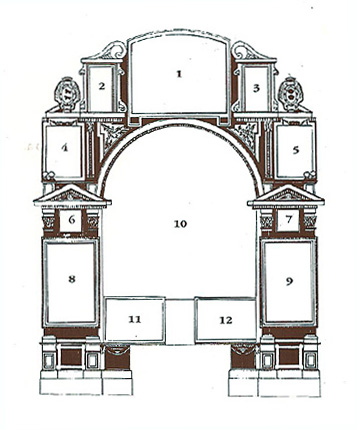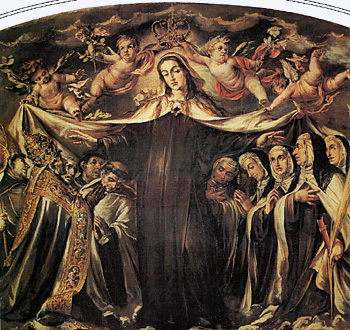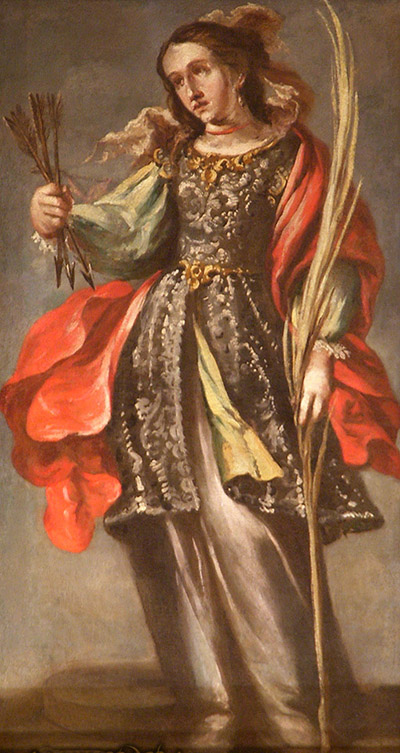|
"the culminating
moment of Spanish baroque" Examining the Art on the Top of the Altarpiece |
||
|
1 = Our Lady of Mount
Carmel |
The Virgin of the Carmelites is an image that was an often repeated theme for the painters of that time; we recall the famous picture of the Virgen de las Cuevas con Cartujos that Zurbarán painted for Seville. The Virgin, in this case, is dressed in the Carmelite habit with its ample protective scapular. She presents herself to us with the arms extended on both sides in a motherly blessing to her children, the Carmelites, while two angels float (putti) holding open the white Carmelite mantle, fastened above her chest with a very beautiful broach which is the shield of the Carmelite Order; another two angels crown the Virgin Mother, at the same time carrying branches of roses and lilies (azucenas), the traditional Marian symbols. Under the flowing mantle, she welcomes members of the Carmelite Order with its two versions: masculine and feminine. The figures are not identifiable but only symbolic: five men among whom are a pope and a bishop, possible Carmelite saints, and six nuns, one of which carries as symbols of consecrated life a book (sometimes a Bible, the Word) and a palm for martyrdom. The whimple of the nuns is that which was typically used in the 17th century. A face in the shadows between the first two nuns is barely visible at first glance—bringing the total to six nuns. All of the Carmelites are in prayer while the one to the extreme right, the one who carries the symbols, is placing her hand over her heart, a gesture recalling contemplative life, living in the heart itself of the Church. . . . 2 = St. Acisclus, martyr
The patron saint of Córdoba, Spain, St. Acisclus suffered martyrdom by beheading during the persecutions of Diocletian along with his sister Victoria, also portrayed in the retablo. . . . 3 = St. Victoria, martyr
The sister of St. Acisclus, St. Victoria also suffered martyrdom, being shot with arrows, during the persecutions of Diocletian and is also a patron saint of Córdoba. There is some doubt about the historical veracity of Victoria's existence, but both martyrs have been honored in liturgy.
|
|



